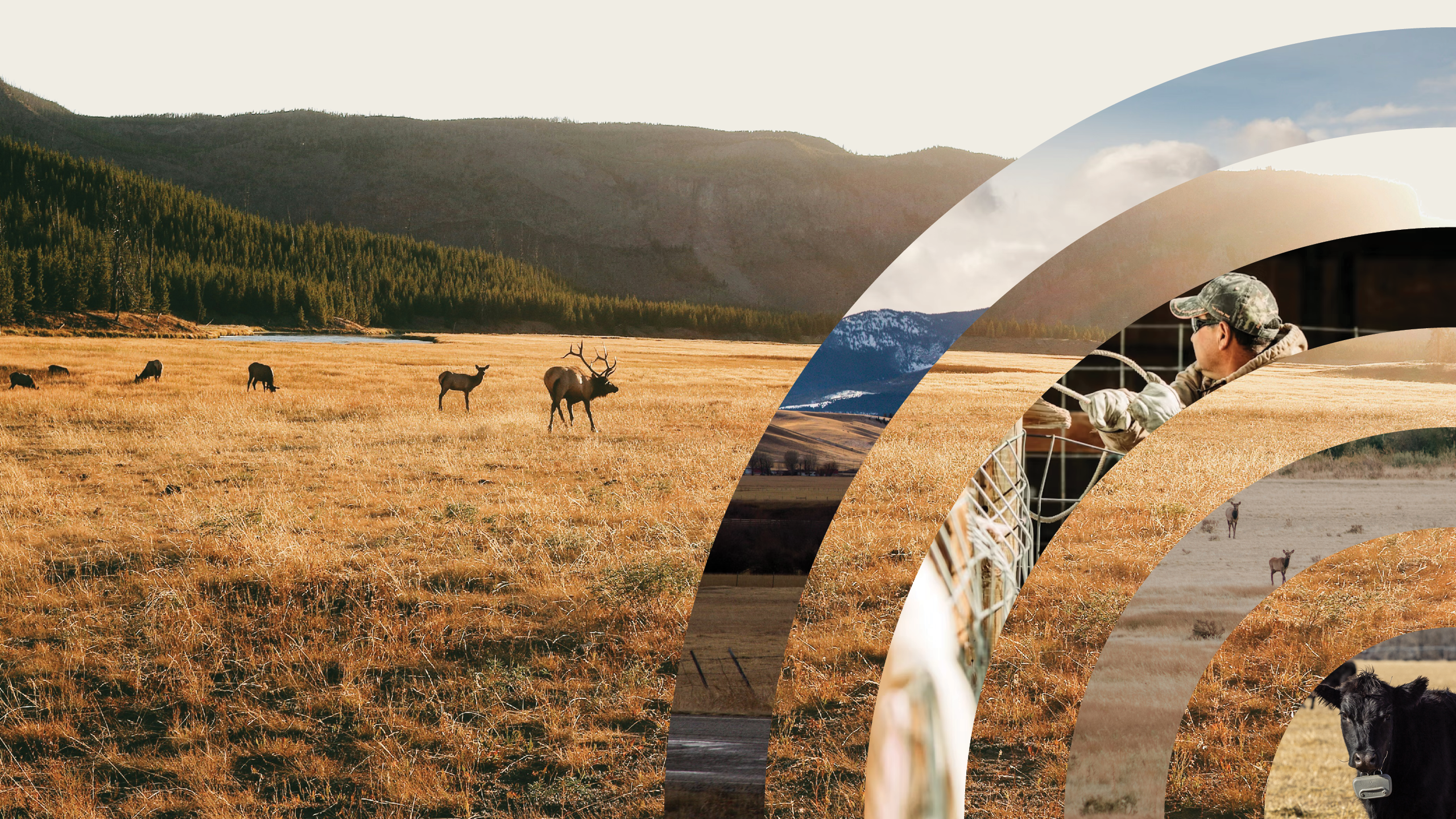“People in this world today crave something real, and our society is lacking that and they could come to Yellowstone and see real nature unfolding in front of their eyes with this very unique personality of a wolf and they loved her. They thought it was great,” said biologist Douglas Smith in December on a NPR program. Smith was mourning the death of the famous female alpha wolf 832F of the Lamar Canyon pack that had been legally killed by a hunter outside of the park. I, too, was thrilled when I got to watch members of that particular wolf pack wandering the landscape of Lamar Valley.
Smith’s claim that people “crave something real” gets at the heart of PERC’s recent Lone Mountain Forum, “Reconciling Economics and Ecology.” Smith is asserting that wolves wandering the landscape of Yellowstone Park are more real than… what exactly? When it comes to nature and landscapes, what is real and what is fake? And what is the “real nature” that Smith believes people are craving?
Since there is no goal or end state toward which any particular ecosystem is heading, who is to say that landscapes and ecosystems modified by human activities are somehow inferior
Nature as a Social Construct
The Oxford Dictionary defines nature as “the phenomena of the physical world collectively, including plants, animals, the landscape, and other features and products of the earth, as opposed to humans or human creations.” In his Metaphysics, ancient Greek philosopher Aristotle observed, “Of things that come to be, some come to be by nature, some by art.” Regarding those objects produced by “art,” which Aristotle called “makings,” he asserted, “All makings proceed either from art or from a faculty or from thought.” In contrast, according to Aristotle, natural entities have internal spontaneous sources of movement, whereas artificial objects are created by activity outside themselves.
Another oft-heard word in connection with nature and landscapes is pristine, which connotes an Edenic state of being “not spoiled, corrupted, or polluted.” The Merriam-Webster Dictionary defines it as “belonging to the earliest period or state.” The idea is that an earlier state of nature, before humanity came along and ruined it, was somehow superior, and perhaps, to use Smith’s concept, even more “real.”
In her book, Rambunctious Garden, conference participant Emma Marris explains, “For many conservationists, restoration to a pre-human or a pre-European baseline is seen as healing a wounded or sick nature. For others, it is an ethical duty. We broke it; therefore we must fix it. Baselines thus typically don’t act as a scientific before to compare with an after. They become the good, the goal, the one correct state.”
Marris opened her session, “Can Ecology Guide Policy?,” by observing that the science of ecology is telling us that ecosystems are dynamic, not stable. Thanks to climate change (glacial advances and melting) and anthropogenic alterations there are no ecosystems that have the same set of players they had even 12,000 years ago.
Nature Unbalanced
The dynamism of ecosystems has not always been recognized by ecologists. However, science has now resolved the great early 20th century debate between “balance of nature” ecologist Frederic Clements and ecosystem dynamist Henry Gleason in favor of Gleason. Clements believed that ecosystems developed through a deterministic and orderly sequence of serial stages until they reached a stable climax that, once achieved, was perfectly balanced unless disturbed. For Clements, each participant in the climax ecosystem fitted tightly into niches as a result of coevolving together.
Gleason countered that ecosystems were assembled by chance depending on what species got there first and were successful in competing with other species as they arrived. For most of the 20th century, most ecologists adopted Clements’s balance of nature views. At the conference, biologist Daniel Botkin noted in passing that most ecologists still instinctively believe in the balance of nature. Scientific evidence, however, shows that Gleason was far more right than Clements—ecosystems are largely assembled by chance. For example, northern temperate forests are composed of an assemblage of species that mixed together as they raced northward out of various refugia as the glaciers retreated.
Instead of trying to force landscapes and ecosystems back toward earlier and notionally more Edenic states, Marris proposed that the right question is “What do we want for the future?” She suggested that since future generations will be richer than ours they might be able to afford and want more natural space. In addition, when thinking about modifying a piece of land, Marris suggested that a person should ask herself, what do you want this piece of land to be in 20 years, 200 years? At the conference table, a lot of the conversation about who gets to decide about the futures of landscapes turned on the pronouns, “we” and “you” in Marris’s two questions.
Who Decides?
Just who “we” is can be problematic. Marris prefers what she believes to be a more democratic process in which stakeholders get to decide how landscapes should be managed and used. Thomas Bray, a former PERC board member, suggested that people who prefer an ecosystem to remain relatively undisturbed could buy a conservation easement. Marris rejected this proposal, saying, “we’re broke.”
As a counterpoint to Marris’s implication that stakeholder democracy is a better and fairer way to decide the future of landscapes, George Mason University Law professor Henry Butler asserted that, in fact, the “we” more often than not turns out to be wealthy environmentalists who prefer to federalize environmental decisions because they don’t trust local people. Given their greater access to distant bureaucratic decision-makers, environmentalists often succeed in imposing the costs of pursuing their aesthetic landscape preferences on poor people.
Management is not the issue. The issue is who will do the management? Everything is managed.
PERC’s Terry Anderson neatly summarized the central dilemma of the conference when he asked, “Do humans impose costs on nature or just on other humans? Can we think of nature in any other way than imposing costs on other people?” For example, the return of wolves certainly imposed costs on local ranchers and hunters in the form of predated livestock and game animals like elk.
Since there is no goal or end state toward which any particular ecosystem is heading, who is to say that landscapes and ecosystems modified by human activities are somehow inferior, sick even, and in need of healing? In his 2001 BioScience article, “Values, Policy, and Ecosystem Health,” Robert Lackey, a fisheries biologist at Oregon State University, pointed out that “ecosystems have no preferences about their states.” How do we know whether or not an acre of land would “prefer” to be a swamp or a cornfield? As Lackey notes, either of them could be considered “healthy” depending on what human preferences are being implemented. “To a conservationist interested mainly in biodiversity, we have degraded nature, but to an agronomist, we have altered wild land to make it better serve humans,” noted the Nature Conservancy’s Peter Kareiva and his colleagues in their 2007 Science article, “Domesticated Nature: Shaping Landscapes and Ecosystems for Human Welfare.”
Who Manages?
PERC fellow Daniel Benjamin made the salient point that for all landscapes and ecosystems “management is not the issue. The issue is who will do the management? Everything is managed.” The fact of the matter is that in an Aristotelian sense nature moves less and less spontaneously. Instead, landscapes and ecosystems are shaped by human preferences and efforts and increasingly take on the character of Aristotle’s “makings.”
The Yellowstone wolves are a case in point. Wolves in the park were managed into local extinction by bureaucratic fiat (stand-ins for the omnipotent “we”) in 1926 when park rangers deliberately killed the last two known wolf pups. Wolves were managed back into existence in the park when “we” decided they should be deliberately reintroduced in 1995. We may be saddened to hear of the death of wolf 832F, but her presence on the landscape was the product of human preferences, not a consequence of unprompted nature. And so was her removal from it.
Even if one grants the doubtful premise that humanity was sometime in the past separate from nature, the reality is that we no longer are. All landscapes and ecosystems have been shaped in accordance with human preferences. Scientific insights derived from ecology will certainly help us better manage ecosystems. But the central question remains: What institutions are best for balancing our conflicting desires and goals when it comes to the various realities we each may crave? However ecosystems will be managed, Yellowstone and all other landscapes are and will increasingly be artificial constructions created by human minds. That is as real as it gets.



